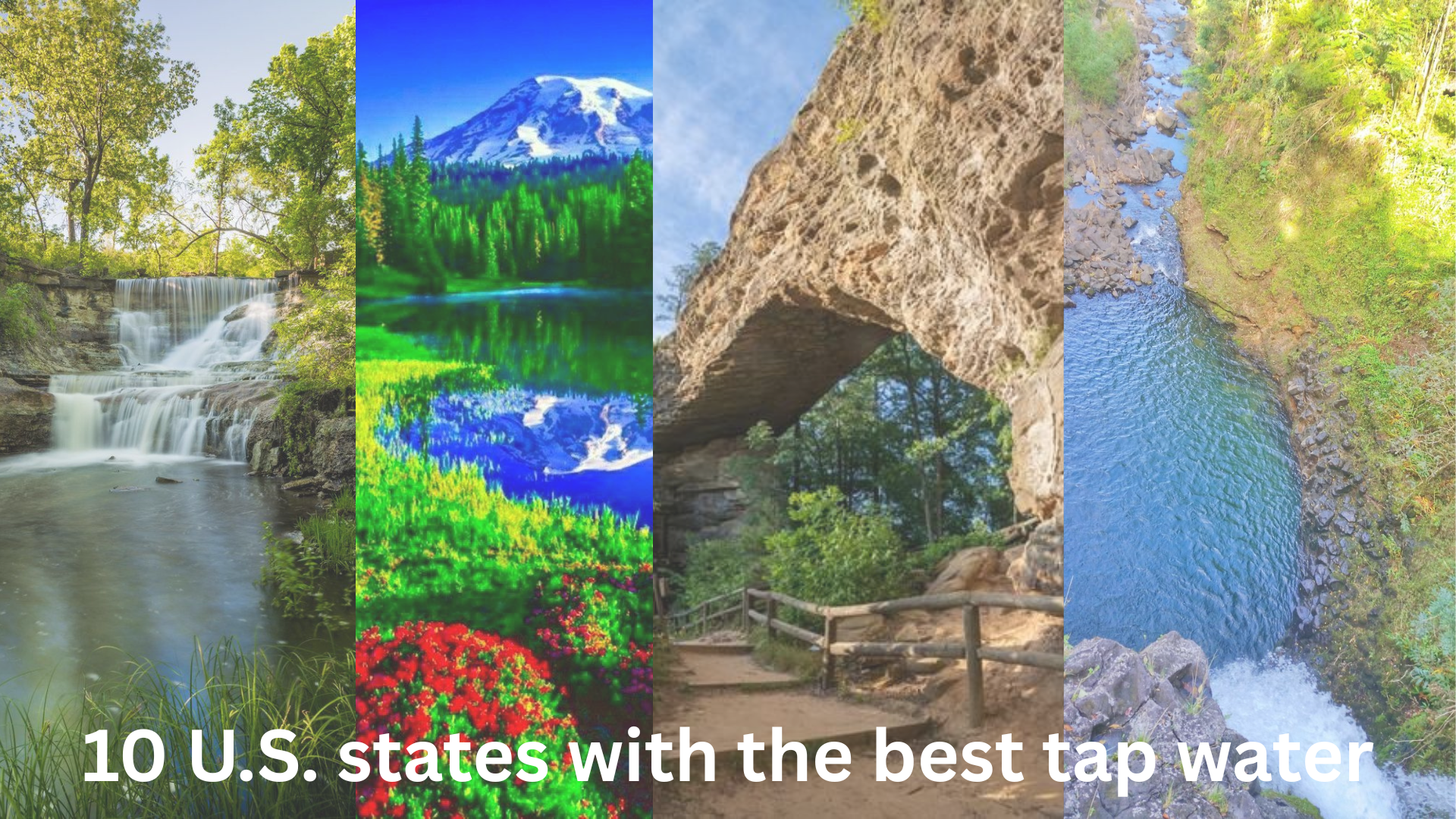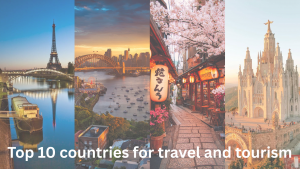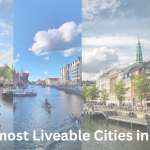Access to clean, safe, and great-tasting tap water is a cornerstone of quality of life. In 2025, J.D. Power’s survey, based on feedback from 32,833 residential water utility customers, ranks Washington, Kansas, Hawaii, Kentucky, Massachusetts, New York, Connecticut, Georgia, Louisiana, and Virginia as the top 10 U.S. states for tap water quality, assessed on taste, color, odor, and hardness. This article explores why these states lead, highlighting their water sources, infrastructure, and unique attributes, while offering insights for residents and visitors.
1. Washington: Pristine and Reliable
Washington tops the list, with 84.5% of customers giving positive marks for tap water quality. Sourced from mountain snowmelt and protected watersheds, particularly in Seattle and Tacoma, the state’s water is naturally low in minerals (1 grain per gallon), making it soft and pleasant-tasting. Washington avoids common issues like taste or odor complaints, thanks to robust filtration and minimal contamination from runoff, despite frequent rainfall. Seattle’s Cedar River Watershed ensures a premium product, earning high praise in J.D. Power’s 2024 survey.
2. Kansas: Clean and Award-Winning
Kansas ranks second, with 96% of its public water supplies meeting or exceeding federal and state regulations. Emporia, Kansas, won the Best Tap Water prize at the Berkeley Springs International Water Tasting, lauded for its clean, great-tasting water. Strict regulations on agricultural runoff, including herbicides and pesticides, protect aquifers. Kansas’s moderately soft water and proactive monitoring for toxins like uranium ensure safety, making cities like Wichita and Topeka standouts for quality.
3. Hawaii: Crystal-Clear Island Water
Hawaii’s tap water, ranked third, is among the nation’s cleanest, with only two water quality violations reported in 2025. Sourced from volcanic aquifers and freshwater streams, it requires minimal chlorine due to low bacteria levels. The state’s tight environmental laws protect its fragile ecosystem, ensuring water purity. Hawaii’s tap water, especially in Honolulu, is naturally filtered through porous volcanic rock, offering a crisp taste that rivals bottled water, perfect for island living.
4. Kentucky: Pure Tap Excellence
Kentucky, fourth in the ranking, boasts exceptional tap water, with Louisville’s water trademarked as “Pure Tap” for its outstanding quality. With 435 public water systems serving 95% of residents, Kentucky’s water faces minor issues with thallium and PFAS but adheres to strict EPA guidelines. Louisville’s Ohio River-sourced water undergoes rigorous treatment, earning national acclaim. The state’s 99.73% fluoridation rate, the highest in the U.S., supports dental health, enhancing its reputation.
5. Massachusetts: Stringent Standards
Massachusetts ranks fifth, with tap water meeting some of the world’s strictest standards, enforced by the Department of Environmental Protection. Heavily forested watersheds naturally filter water, reducing contaminants. Cities like Boston benefit from protected sources like the Quabbin Reservoir, ensuring clean, moderately soft water. Immediate violation notifications and rapid resolutions maintain high quality. Massachusetts’s proactive approach makes its tap water a model for others, with minimal violations (4,197 in 2021).
6. New York: Catskills Purity
New York’s sixth-place ranking is driven by infrastructure improvements, particularly in New York City, where tap water is sourced from the Catskill and Delaware watersheds. Famous for its clean, great-tasting water, NYC’s supply is so prized that a California pizza chain ships it cross-country for authenticity. Despite 6,743 violations in 2023, New York’s proactive measures ensure safety and quality, with residents praising its taste on platforms like Reddit.
7. Connecticut: Protected Watersheds
Connecticut, ranked seventh, benefits from laws prohibiting wastewater treatment discharges within public water supply watersheds, minimizing exposure to pharmaceuticals and contaminants. The state’s moderately soft water, sourced from sand and gravel aquifers, is rigorously protected through the Aquifer Protection Area Program. Cities like Hartford enjoy high-quality tap water, with only 3,379 violations in 2021, reflecting Connecticut’s commitment to safety and taste.
8. Georgia: Southern Exception
Georgia, an outlier among southern states, ranks eighth despite challenges with polluted rivers and PFAS near military bases. Atlanta’s water, sourced from the Chattahoochee River, undergoes advanced treatment, ensuring safety. With 95.07% fluoridation and 10,968 violations in 2021, Georgia balances issues with strong regulatory efforts. Its tap water quality stands out compared to southern peers, earning positive customer feedback in J.D. Power’s survey.
9. Louisiana: Rising Star
Louisiana, ninth on the list, defies southern trends with high-quality tap water, despite 37.87% fluoridation, among the lowest in the U.S. The state’s public water systems, particularly in New Orleans, have improved treatment processes, addressing past issues with groundwater contamination. With 3,245 violations in 2021, Louisiana’s water is moderately hard but safe, earning praise for taste and clarity, making it a surprising contender in the rankings.
10. Virginia: Reliable and Clean
Virginia rounds out the top 10, with tap water quality bolstered by well-managed public systems. Cities like Richmond and Virginia Beach benefit from diverse sources, including rivers and reservoirs, with minimal contamination. Virginia’s 3,379 violations in 2021 reflect strong compliance with EPA standards. The state’s moderately soft water and consistent monitoring ensure a reliable supply, earning high customer satisfaction in J.D. Power’s 2024 survey.
Why These States Excel
These states lead due to natural advantages, robust infrastructure, and stringent regulations. Washington and Hawaii benefit from pristine sources—snowmelt and volcanic aquifers—requiring minimal treatment. Kentucky and Massachusetts enforce rigorous standards, while Kansas and Connecticut protect aquifers from agricultural and industrial runoff. New York’s infrastructure upgrades and Georgia’s treatment advancements overcome regional challenges. Louisiana and Virginia balance groundwater issues with effective management, and all prioritize taste, safety, and clarity, as evidenced by J.D. Power’s 84.5% approval for Washington.
Factors Driving Tap Water Quality
- Natural Sources: Hawaii’s volcanic filtration and Washington’s snowmelt reduce contaminants naturally.
- Regulation: Massachusetts and Kentucky’s strict standards ensure rapid violation fixes.
- Infrastructure: New York’s watershed investments and Connecticut’s wastewater bans enhance purity.
- Monitoring: Kansas’s surveillance of agricultural toxins and Virginia’s consistent testing maintain safety.
Despite challenges like PFAS (affecting 45% of U.S. tap water) and aging pipes, these states minimize violations, with Hawaii reporting only two in 2025.
Tips for Enjoying Tap Water
- Test Locally: Even in top states, rural wells (20% of U.S. households) may need testing, as they’re unregulated under the Safe Drinking Water Act.
- Use Filters: In areas with hard water (Louisiana, Virginia), filters can improve taste.
- Stay Informed: Check local water quality reports, especially in Georgia, for PFAS updates.
- Travel Smart: Carry reusable bottles in Hawaii or New York to enjoy their crisp tap water.
- Support Conservation: Reduce usage, as U.S. water bills have risen 54.8% since 2012, per J.D. Power.
Conclusion
The top 10 states for tap water in 2025—Washington, Kansas, Hawaii, Kentucky, Massachusetts, New York, Connecticut, Georgia, Louisiana, and Virginia—offer clean, safe, and great-tasting water, thanks to natural sources, strict regulations, and modern infrastructure. From Louisville’s “Pure Tap” to Hawaii’s volcanic purity, these states set the standard for quality. Whether you’re a resident or visitor, you can trust their tap water, though local testing and filters enhance the experience in some areas.














